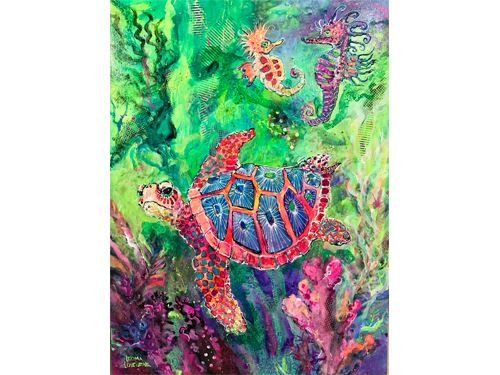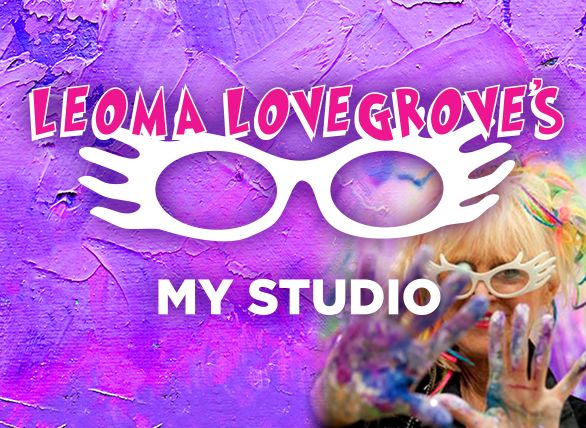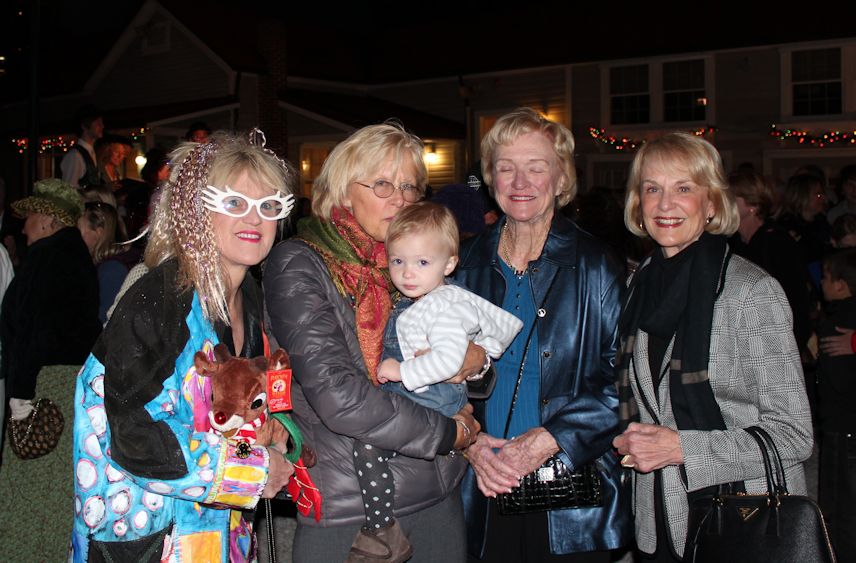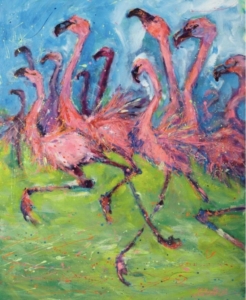 This is a photograph of a painting called Flamingo Crossing.
This is a photograph of a painting called Flamingo Crossing.
A man by the name of Harold Dunfee saw it at Lovegrove Gallery & Gardens in 2013. That was the same year Harold purchased a home in northwest Cape Coral. He says the painting caught his eye immediately and that he promised himself he’d purchase it as soon as funds became available.
I’ll let Harold tell you what happened from there.
“In 2015, I had a medical setback – a subdural hematoma (blood clot in the brain) that resulted in three brain surgeries over the course of six months. After the first surgery, I had two seizures that resulted in memory loss.”
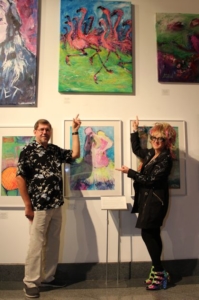 During his recovery and struggle to regain his memory and thinking faculties, a friend of his from Fort Myers by the name of Karen sent him a miniature Flamingo Crossing.
During his recovery and struggle to regain his memory and thinking faculties, a friend of his from Fort Myers by the name of Karen sent him a miniature Flamingo Crossing.
“My girlfriend brought the package to my hospital room. When I opened it, I immediately recognized the painting and who created it – despite the fact that I was still memory-impaired. That’s how special Flamingo Crossing was to me. I am convinced that the small reproduction helped me on my road to a complete recovery from my ordeal.”
Harold moved permanently to his Cape Coral home in August of 2016. One of his first acts was to visit Lovegrove Gallery & Gardens to see if the original was still there. His heart fell when he did not see it on any of the 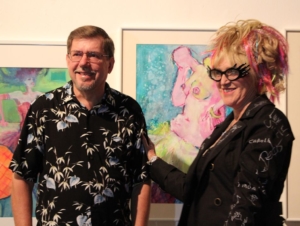 walls, but his spirits rebounded when he learned it hadn’t been sold and was still available. The rest is history.
walls, but his spirits rebounded when he learned it hadn’t been sold and was still available. The rest is history.
“Flamingo Crossing has an honored place on the wall in my home,” says Harold. “Art does indeed create special memories.”
There’s actually a scientific basis for the healing power of bright, sunny, soothing paintings like the ones I create. A 2011 University of London study found that blood flow 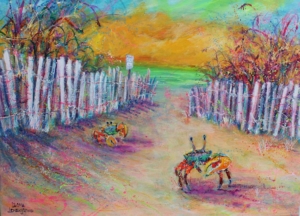 increased 10 percent to the “joy response” part of the brain when subjects saw a beautiful painting. But you don’t have to be a research scientist to know that visual art has a strong, positive physiological effect on the brain.
increased 10 percent to the “joy response” part of the brain when subjects saw a beautiful painting. But you don’t have to be a research scientist to know that visual art has a strong, positive physiological effect on the brain.
With this in mind, the Cleveland Clinic recently found that more than 60 percent of patients reported a reduction in stress when they looked at contemporary paintings, fine art posters, nature images and public sculptures displayed in examining rooms, hallways and private rooms.
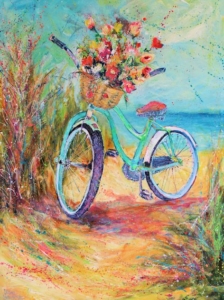 “Art in hospitals does so many different things for different people,” says Joanne Cohen, executive and curator of the art program at Cleveland Clinic’s Arts & Medicine Institute. “Because of the diversity, over 5,400 objects, 20 site-specific installations, spread out over 23 million square feet of facilities, we are far more diverse than most hospital collections.”
“Art in hospitals does so many different things for different people,” says Joanne Cohen, executive and curator of the art program at Cleveland Clinic’s Arts & Medicine Institute. “Because of the diversity, over 5,400 objects, 20 site-specific installations, spread out over 23 million square feet of facilities, we are far more diverse than most hospital collections.”
For some patients and visitors, the pieces create a natural focal point and an incentive to walk down the hall. For others, it’s an opportunity to peacefully reflect or learn from the explanatory labels, and distract themselves from their surroundings.
Are you or a loved one facing a health challenge? Are you or someone you know 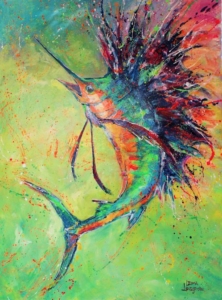 battling depression or trying to get over a loss? Come spend an hour or two in our gallery and gardens. You’ll be surprised how much better you feel. Surround yourself with sunny, cheerful uplifting art. We have a slew of affordable prints, so you can Leomatize your entire house if you need or want to. And, like Harold Dunfee, you can get that special original when the time is right.
battling depression or trying to get over a loss? Come spend an hour or two in our gallery and gardens. You’ll be surprised how much better you feel. Surround yourself with sunny, cheerful uplifting art. We have a slew of affordable prints, so you can Leomatize your entire house if you need or want to. And, like Harold Dunfee, you can get that special original when the time is right.
